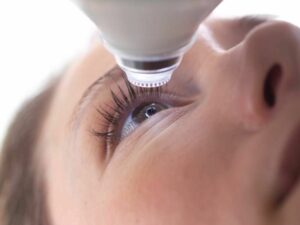With the advent of technology, we have seen significant strides in this field, leading to even more effective and accurate procedures. In this blog post, we delve into two such advancements – Femto LASIK and Contoura Vision, exploring their unique characteristics, how they work, their benefits, and considerations to keep in mind when opting for these procedures. Whether you’re considering a vision correction procedure or simply seeking knowledge, this comprehensive overview is for you.
Contents
What Is Femto LASIK?
 Femto LASIK, short for Femtosecond Laser-Assisted in Situ Keratomileusis, is an advanced form of the LASIK procedure that utilizes two types of laser technology for vision correction. The term “Femto” originates from the femtosecond laser used in the procedure. It operates at ultra-high speeds to create a precise and minimally invasive corneal flap. This is in contrast to traditional LASIK surgery, where a mechanical device with a blade (a microkeratome) is used to create this flap.
Femto LASIK, short for Femtosecond Laser-Assisted in Situ Keratomileusis, is an advanced form of the LASIK procedure that utilizes two types of laser technology for vision correction. The term “Femto” originates from the femtosecond laser used in the procedure. It operates at ultra-high speeds to create a precise and minimally invasive corneal flap. This is in contrast to traditional LASIK surgery, where a mechanical device with a blade (a microkeratome) is used to create this flap.
The Femto LASIK procedure starts with the use of the femtosecond laser to make a thin, circular flap in the cornea – the transparent front part of the eye. This flap is then folded back to expose the underlying cornea. A second laser, an excimer laser, is then used to reshape the corneal tissue, correcting the refractive errors that cause myopia (nearsightedness), hyperopia (farsightedness), and astigmatism. After the cornea has been reshaped, the flap is repositioned and naturally adheres back to the eye, without the need for stitches.
What Is Contoura Vision?
Contoura Vision, also known as topography-guided LASIK, is a highly advanced form of LASIK eye surgery. It employs topographical mapping to achieve highly personalized vision correction. The technology at the core of this procedure is able to measure and map the unique irregularities and contours of the individual’s cornea with an unprecedented level of precision.
These measurements are then used to guide the laser in reshaping the cornea. And ensuring an extremely individualized correction of the visual imperfections specific to each patient. The procedure begins with a detailed mapping of the cornea’s surface using a special device. This device creates a topographic map that illustrates the minute hills and valleys on the corneal surface, revealing irregularities that might not be detected by traditional methods.




